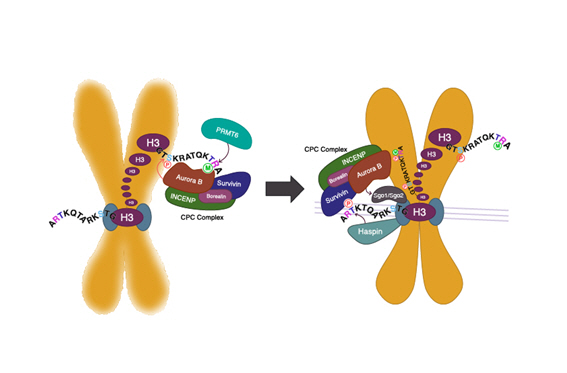Prof. Chang-yeong Jang and Yong-gi Kim’s research team identifies a key mechanism in cell division.
- Views 8430
- Writer 커뮤니케이션팀
- 보도일자 2020-02-12
Sookmyung Women’s University’s research team succeeded in identifying the molecular mechanism of chromosome condensation and separation that can help understand the pathogenesis of senile diseases caused by intractable cancer and stem cell reduction for the first time in history.
The joint research team, led by Professor Chang-yeong Jang and Professor Yong-gi Kim from the Division of Pharmacy said, “The process of chromosome condensation and separation in the cell division process is precisely controlled by the dynamic formula of histone protein’s N-terminus, and amidst this series of processes, we found a missing piece of the puzzle that has eluded us until now.”

This research was supported by the National Research Foundation of Korea’s leading research center (MRC) project and basic research project (basic research and mid-range research), and the relevant information was published in the world-renowned journal (Nature Communications, IF:11.878) on January 30.
(Title of Paper: PRMT6-mediated H3R2me2a guides Aurora B to chromosome arms for proper chromosome segregation)

The research team announced, “The understanding of the molecular mechanism of chromosome condensation and separation during cell division can help us understand the pathogenesis of senile diseases caused by intractable cancer and stem cell reduction.”
Professor Yong-gi Kim is a researcher specializing in epigenetics, focusing on the study of protein arginine methylation, and Professor Chang-yeong Jang is a researcher who specializes in studies that identify the molecular mechanism in cell division process. The joint research team said, “We are currently studying the key mechanisms of asymmetric division of stem cells, and the experience and results of this research will allow us to focus more on developing original technologies to overcome various diseases caused by aging and intractable diseases such as cancer.”



